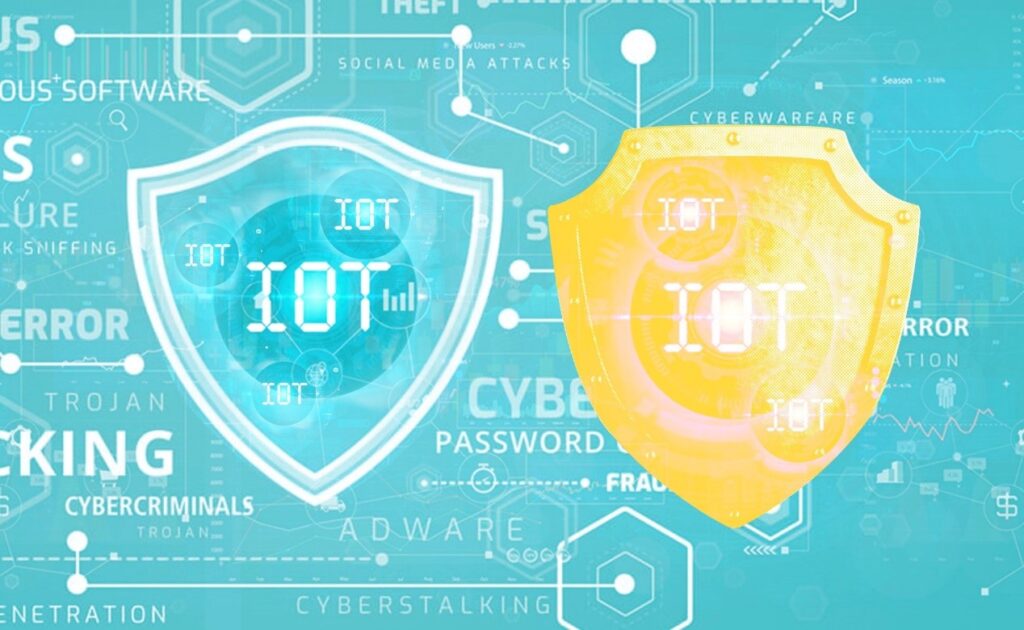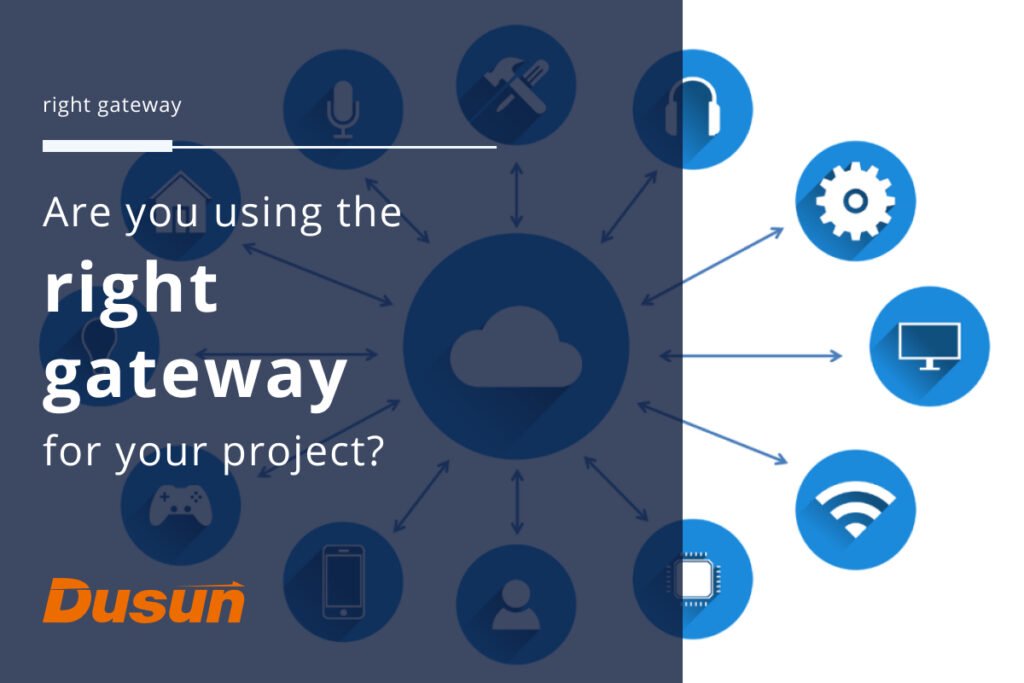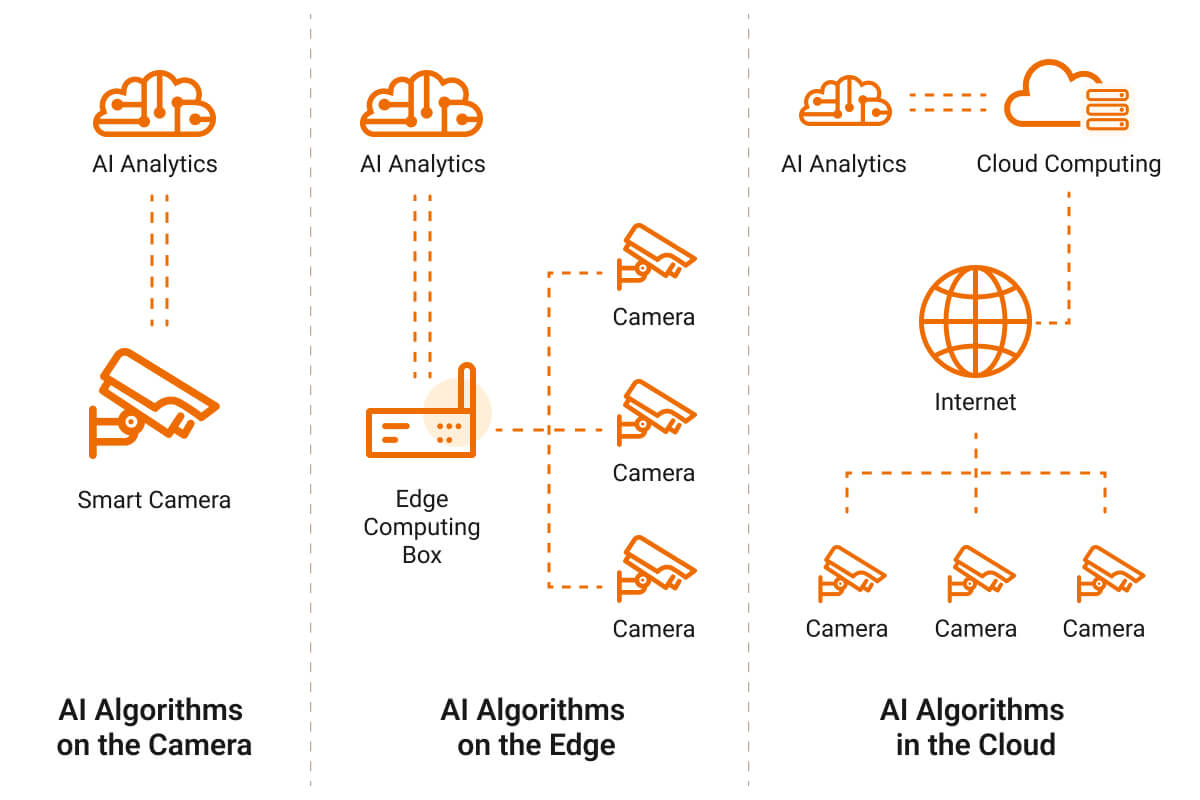Choosing the right IoT gateway for your enterprise projects and solutions requires careful consideration of your needs. This article provides 10 steps to help.
Basiclly, an IoT gateway hardware solution should support:
- Connect uplink to the Cloud so the enterprise can make easy management
- Connect downlink to sensors and existing controllers embedded in the system
- Preprocess filtered and selected data
- Local decision making, enabling easy interconnection with legacy systems
- Hardware Root of Trust, Data Encryption, and Software Lockdown for Security
- Local Edge Computing Enables On-Device Analytics
So, what’s the steps of choosing an appropriate IoT gateway hardware for your IoT solutions or projects?
Step 1: Make Sure the Goal of Your IoT Projects and Solutions and Then the Functionality You Must Need
Identifying the primary goal and functionality needed from the IoT gateway is the first step in implementing an IoT gateway. This ought to serve as the selection process’ primary directive. Here are two examples to illustrate the importance.
IoT Predictive Maintenance
To avoid equipment failure and pricey repairs, a factory owner may want to schedule predictive maintenance on the equipment on the factory floor. The machines would need to be equipped with sensors that measure overall performance to accomplish this goal.
The chosen IoT gateway would need to securely gather this data and have built-in alarms that let the factory owner know when a particular machine is about to overheat or go offline.
The analytical processing unit in the cloud would receive the performance data from the IoT gateway at that point. The analytical processing unit could determine which machines have performance problems by analyzing the trends in performance over time of all the devices.
As a result, when necessary, the factory owner might arrange preventative maintenance on the machines having performance problems.
Smart Irrigation System Using IoT
Another possibility is that a farmer wants to increase agricultural productivity while automating irrigation on his property. In this scenario, the farmer would need to install numerous sensors on his property that monitor environmental variables, including light, temperature, humidity, and soil moisture.
The chosen IoT gateway model would need to gather data from the sensors, filter the data, and only provide the data required for the irrigation system’s automation to the irrigation system.
The gateway must also send all the data to the cloud-based analytical processing unit. The analytical processing unit would then assess patterns, allowing the farmer to identify the variables affecting his crop yield and decide what corrective action is required.
The examples mentioned above demonstrate how the optimum IoT gateway will vary depending on the eventual goal and functionality directed.
Examples of IoT Gateway Functionality Requirement
The correct procedure for choosing an IoT gateway is first to list your requirements, which you can enumerate as follows:
IO & Interface Requirements
1 x RS232
1 x RS485
Network Requirement
1 x GPRS
1 x Ethernet
1 x Zigbee
Development Environment
Python
Memory Requirements to Run Your Edge Computing IoT Application
2GB RAM
EMMC Required
8GB
Power Rating
USB Type-C 5V/3a
Certifications
CE, FCC, RoHS
Once you have listed the above, you can look for IoT Gateway supplier available in the market that meets your requirements. After making sure the performance of an IoT gateway for your IoT projects or solutions, you can continue to consider the following factors:
Step 2: Make Sure the Data Volume Your IoT Projects/Solutions Need to Collect
In some circumstances, hundreds of sensors may be deployed, while in others, over ten thousand sensors may be present in one area, and each sensor takes a series of thirty readings every second. The next crucial stage in the IoT gateway selection process is to evaluate the necessary data volumes.
Additionally, the project side can install more than one IoT gateway, depending on the data volume requirements. Therefore, this is another crucial issue that needs to be considered.
Step 3: Make Sure Whether Your Data Collected from Sensors Need to be Filtered?
Sensor data can be gathered and transferred straight to the cloud’s analytical processing unit. However, not all sensor data is required in many IoT projects, or the IoT gateway may need to pre-process the sensor data before sending it to the analytical processing unit.
As a result, the project party might need to invest in a gateway that can thoroughly filter the data from the sensors and carry out many pre-processing operations on the data.
Edge computing gateways are capable of carrying out these complex pre-processing and filtering tasks.
Step 4: Make Sure If This IoT Gateway Can Work with Your Installed Equipment/Devices
Long-lasting machinery and equipment are frequently used in factories and manufacturing facilities. Upgrading these devices to connect directly to the cloud is often neither feasible monetarily nor possible. The IoT gateway of choice must support the already installed devices in these situations.
Step 5: Make Sure Your IoT Gatewat Can Connect to Your Selected Network Server
In addition, not all IoT gateways can connect to different network servers. ThingsBoard, Helium, The Things Network, ChirpStack, and other network servers are examples. As a result, project managers must focus on this factor.

Step 6: Make Sure the Place You will Install IoT Gateways
As a result, the IoT gateway would need to be solid and able to function in extreme conditions. In some projects, gates may need to be located in an HVAC unit or at high altitudes.
Some IoT gateway versions can withstand temperatures between -30 and 70 degrees Celsius, altitudes between 15 and 5000 meters, and scenarios with a lot of stress and vibration. The person in charge must make sure they choose an IoT gateway appropriate for the operational environment.
Step 7: Make Sure Protocols and Interfaces Required by Your IoT Projects/Solutions?
An IoT gateway is an essential piece of the puzzle for any company wishing to monitor its operations remotely. As an IoT hub between multiple devices, IoT gateways must have a wireless connection such as Wi-Fi or Wireless LAN. It also needs long-range connectivity options like LTE M for monitoring from afar.
Sometimes, this has become more relevant with manufacturing plants themselves. When they choose remote control over onsite management by utilizing their smartphones depending on your budget, they may not get all these features when purchasing a less expensive model.
Step 8: Make Sure the Certification Required for IoT Gateway, This May Influence When Your IoT Solutions/Projects can be Ready to Market
Inadequate certification procedures for IoT devices can seriously impact vendors’ time to market and have serious legal and financial repercussions. By selecting an IoT gateway with the appropriate certification, consumers can significantly reduce the time and effort required for the subsequent IoT project.
The IoT gateway model must adhere to FCC, CE, and IC regulations. The necessary standard compliance for electronic products is this. Additionally, additional certifications, such as PTCRB mobile or GCF, may help you determine whether you are using this device in a mobile company.

Step 9: Make Sure How Much Storage Your IoT Project’s Data Require
These are usually designed for the typical factory setting with a reliable network. However, in network failures, these devices will need to store data. Unfortunately, they typically only come with limited storage capabilities or none – this can create an issue when storing large amounts of information that may be needed if repairs take some time.
Therefore, you should invest in one with expandable memory capacity and slots for additional micro-SD cards, so your IoT gateway doesn’t run out during essential times like periods of high activity onsite.
Or, you can choose to buy some large-storage IoT gateways. Explore our Dusun Pi IoT Gateway with storage up to 8GB, or Edge Computing gateway with 128GB high-speed eMMC.
Step 10: Make Sure the Safety Requirements for Your IoT Project/Solutions?
Securing your IoT gateway is the first step to ensuring the rest of your IoT platform. Modern gateways have built-in security options. So make sure you know what encryption standards it uses and whether or not authentication processes are also in place before deciding on one for yourself.
Also, if tampering detection features do not come in-build with a new purchase, be sure to add them later; this will protect against any potential attackers trying to break into networks by taking advantage of vulnerabilities that might exist within outdated systems.

Conclusion
Finding an IoT gateway that can handle all this data is essential, given how quickly the IoT market is growing. The incorrect gateway choice may hamper the project’s progress. It is advised that a corporation list the performance requirements it requires when selecting a gateway by making reference to the questions raised above.



















